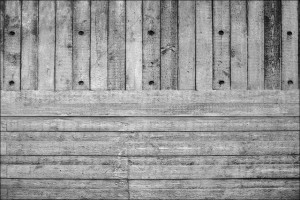Concrete is one of the most ubiquitous, flexible, and dynamic building materials in architectural history. By offering a profoundly different building technique to architects and engineers, it has significantly altered the way in which buildings are designed and constructed in the modern age. To adequately appreciate concrete and its significance in modern architecture, it is worth noting several important uses of concrete in modern construction, as well as addressing the criticisms and duologies which concrete presents.
Concrete, and in particular reinforced concrete, has permitted architects and architecture to explore new realms of design and construction. Prior to the advent of reinforced concrete – concrete surrounding an inner, reinforcing frame – structures were restricted by the weight the materials could hold, and as such were unable to rise as tall or assume the unique forms which were to come later. Concrete contributed to the creation of skyscrapers, stronger bridges, and several other new and modern forms.1 Several architects, including Le Corbusier, Louis Kahn, and Frank Lloyd Wright adopted the use of concrete in their designs and proliferated its use. Le Corbusier constructed such buildings as the Unité d’Habitation, which used béton brut as its primary material, and the Chapel of Notre-Dame-du-Haut, which featured a dynamic and sweeping use of concrete, as well as pioneered the International Style, which emphasized inner concrete structure such as piloti and open plans.2 Louis Kahn was significant for his monumental style and use of concrete in buildings such as the Salk Institute and Yale University Art Gallery. Frank Lloyd Wright was a pioneer of the cantilever in his buildings, which required the use of reinforced concrete. Figure 1 illustrates the béton brut of the Unité d’Habitation and Figure 2 shows an example of Wright’s cantilever in practice. These examples illustrate how concrete was used in the twentieth century, and how important it was to modern construction in general.


Concrete’s importance and ubiquity leads to several criticisms and questions regarding its use in the modern age. Specifically, the use of concrete raises questions of modern versus un-modern, natural versus unnatural, and international versus local.3 The first duology, modern versus un-modern, concerns how concrete is used in construction. Because of how ubiquitous and flexible it is as a material, concrete can be used in many ways; in its most eccentric uses it assumes the modern forms such as those described above from Le Corbusier, Kahn, and Wright, but in its most basic uses it can be merely an un-modern, common building material like any other – like brick, stone, or marble, for example. Because concrete is used in such dynamic ways and in so many places, this criticism is often raised.

Next, it is unclear whether or not concrete is a natural or unnatural material. It is clear why concrete would be unnatural: it is a constructed material from many aggregated sources and is often used to cover nature, as it is often employed in many urban landscapes. However, as Adrian Forty argues, there are many aspects of concrete which are highly natural. Concrete is essentially formless, and as such can be manipulated into varied forms, including ones which imitate nature and other materials such as wood, brick, or metal.4 Le Corbusier’s own satisfaction with the naturalness of Unité d’Habitiation’s béton brut demonstrates how concrete can be natural. Figure 3 provides a clear example of how concrete can assume natural forms, in this case those of wood. The dynamic and formless properties of concrete allow one to examine how concrete is used, and draw conclusions about its use and affect.
Finally, concrete has a problem with its international versus local scope. Concrete features heavily in the International Style and in construction of buildings with conventionally modern and international typologies, lending to a classification as a global material, widely capable of usage anywhere in the world. However, this usage comes at the cost of indigenous materials and vernacular styles, as concrete replaces local materials out of its inexpensive cost and ease of use. This conflict between universal versus local causes one to think critically about how concrete can and should be used in construction.
Concrete is doubtless on of the most important building materials of the twentieth century. It is completely ubiquitous and raises questions and issues which shed light on its use as a material.
-JH
Notes:
Figure 1: Vincent Desjardins, l’Unité d’Habitation de Grandeur Conforme. Licensed under CC BY 2.0 via Flickr. Available at Flickr, link (accessed November 24, 2015).
Figure 2: Timothy Neesam, Frank Lloyd Wright’s Fallingwater. Licensed under CC BY 2.0 via Flickr. Available at Flickr, link (accessed November 24, 2015).
Figure 3: George Rex, The Hayward, Concrete Texture I. Licensed under CC BY-SA 2.0 via Flickr. Available at Flickr, link (accessed November 24, 2015).
